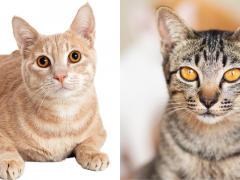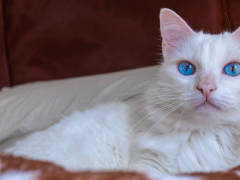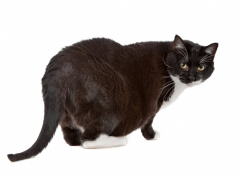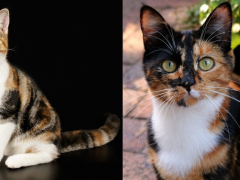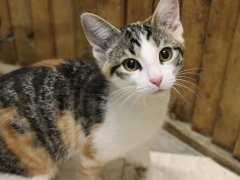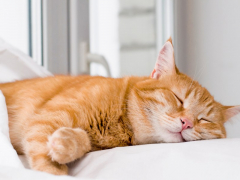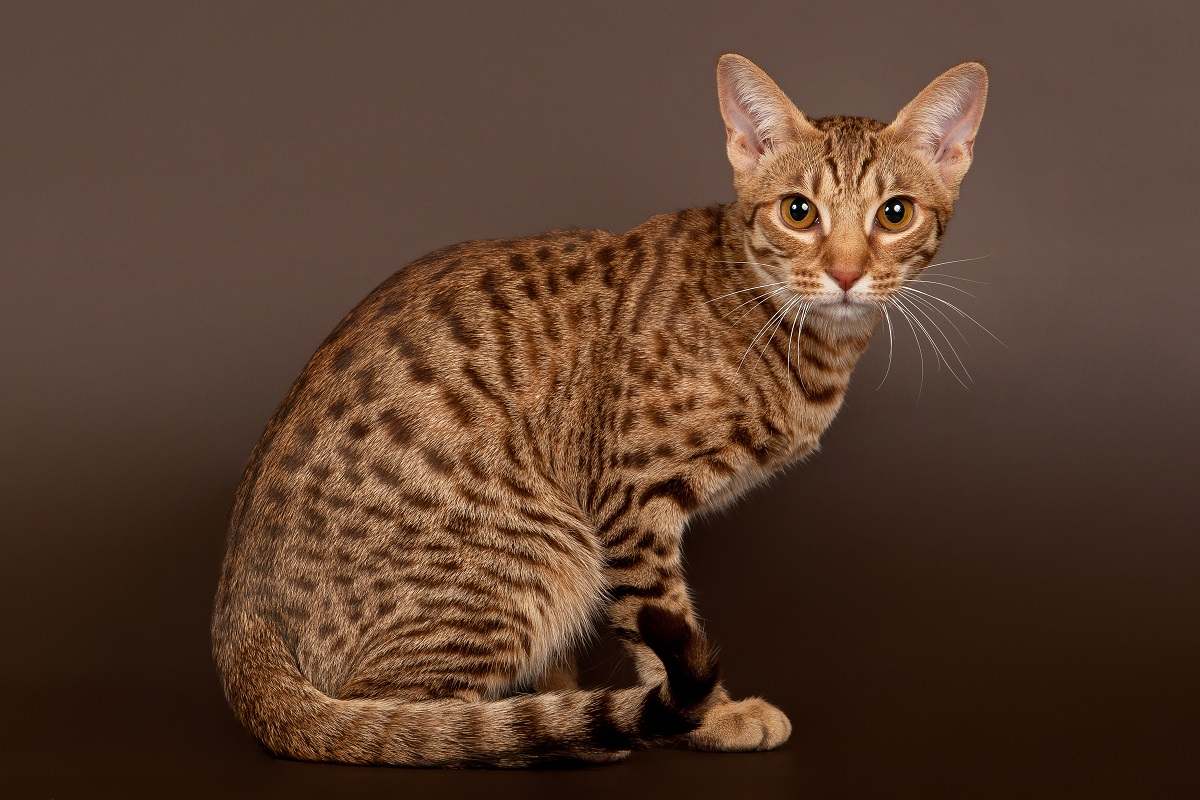
dien | Shutterstock.com
Spotted tabby is one of five tabby patterns found in cats. All tabbies have an “M” marking on their forehead, but markings on the body vary depending on the type of tabby pattern. Spotted tabby cats have spots across their bodies, as well as tiger stripes on their faces, legs, or tails. The spotted tabby pattern is found in several purebred cats, including the Bengal, Egyptian Mau, Ocicat, and Savannah.
Read on to learn 10 fascinating facts about spotted tabby cats.
1. Spotted Tabby Is a Coat Pattern, Not a Breed
Spotted tabbies aren’t their own breed. Instead, this is a coat pattern found in several purebred cats and mixed-breed cats.
There are five types of tabby pattern: classic tabby (swirled markings), mackerel tabby (vertical stripes), spotted tabby, patched tabby (any type of tabby markings interspersed with patches of another color), and ticked tabby (agouti, as seen in the Abyssinian).
Spotted tabbies look a lot like mackerel tabbies, which have vertical stripes across their bodies. In a spotted tabby, these stripes are broken to form spots. As a result, spotted tabbies don’t have random spots like you might see in a Dalmatian, for instance. They’re much more uniform in size and placement. They also retain some of their complete stripes, particularly on their legs, faces, and tails.
2. Spotted Tabbies Can Be Any Color—Even Black!
Spotted tabbies come in a range of other colors, including orange, brown, gray, and even black. Though you might not see the pattern easily (or perhaps at all), most black cats do have some sort of tabby gene. It’s just rendered invisible or nearly invisible by the also-dominant black coat gene. Your all-black cat could be a spotted tabby in disguise. If you want to look for tabby markings on your black cat, try when they are lying in the sun, which can reveal hidden patterns.
3. Coat Pattern Doesn’t Affect Temperament
You might have heard that orange cats are mischievous, or that tabby cats are social and playful. However, despite common myths and misconceptions, coat colors and patterns don’t affect a cat’s temperament. This means that a spotted tabby can range from aloof to cuddly, lazy to hyperactive, and silent to chatty.
4. Some Purebred Cats Are Spotted Tabby
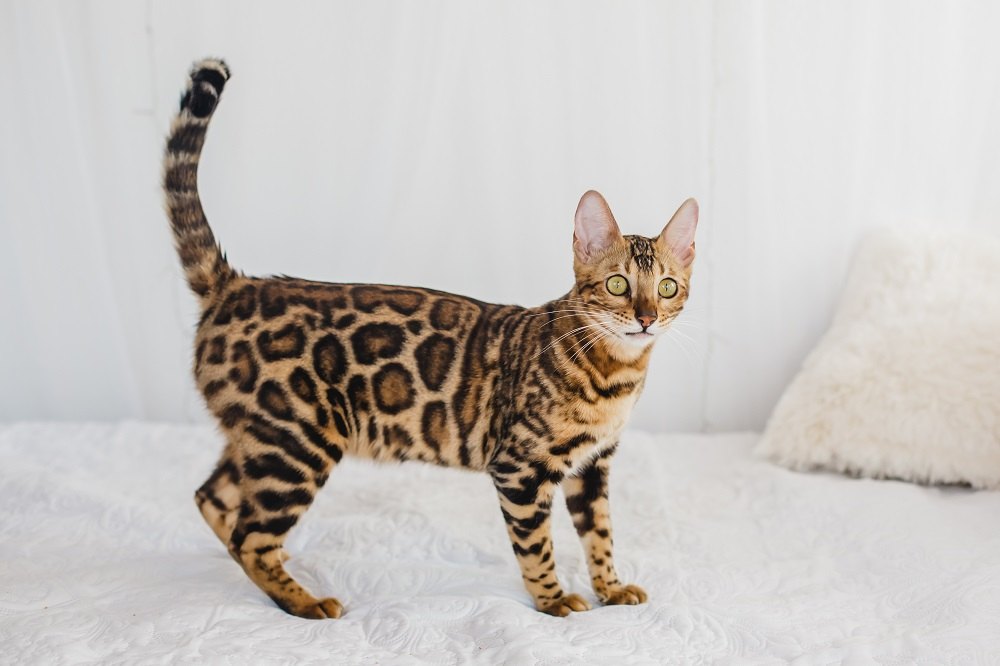
Some Bengal cats have two-toned spots called rosettes. LElik83 | Shutterstock.com
Some breeds with the spotted tabby pattern include the American Bobtail, Australian Mist, Bengal, Egyptian Mau, Pixiebob, Ocicat, Savannah, and Serengeti. The pattern is also found in several other breeds, and in mixed-breed cats.
5. The Tabby Pattern Came From the African Wildcat
It’s thought that mackerel tabbies were the first tabby cats, inheriting the tabby gene from the African wildcat. These wild cats are a bit larger than domestic cats. The spotted tabby likely emerged later from gene mutations and selective breeding.
6. The Tabby Pattern Helps Cats Camouflage
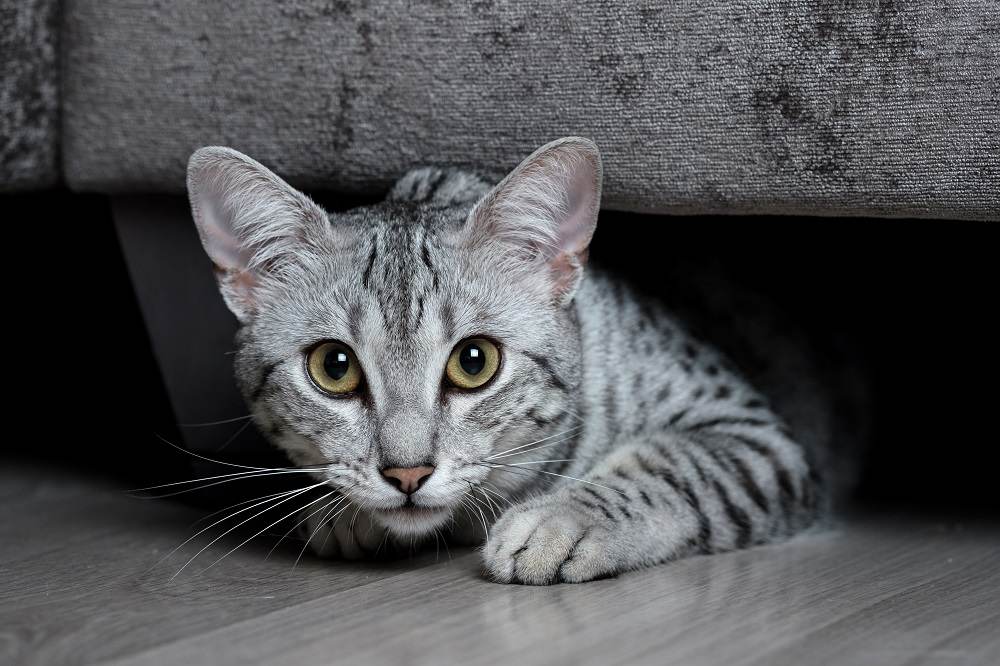
In the wild, stripes, swirls, and spots help cats blend into their environment. Darren Miles | Shutterstock.com
The African wildcat and many other spotted and tabby-patterned felines use their coats to blend into their environments. This helps them sneak up on unsuspecting prey. This camouflage can also work for domestic tabby cats, though most of them have far less use for it–and sometimes our bright green lawns make them stand out more than their ancestors in the wild.
7. Tabbies Were Named After a Silk From Baghdad
A striped silk from the Attabiyah district of Baghdad was the tabby’s namesake. This silk was called “atabi,” which was later adopted as “tabis” by the French. In English, the word morphed into “tabby,” and was used to describe cats patterned with stripes, swirls, and spots.
8. The M on Their Foreheads Has Multiple Origin Stories
All tabby cats have an “M” marking on their foreheads. Various lore says the “M” stand for something, such as the Egyptian word “mau” or even the sound “meow.” In Christianity, the Virgin Mary blessed tabby cats with their “M” by stroking the head of a mother cat. In Islamic legends, the “M” is for Muezza, a cat that saved the Prophet Muhammed from a venomous snake. Scientifically, the “M” marking is caused by genetics and was likely inherited from the African wildcat.
9. Lots of Cats Are Tabbies
Since tabby genes are dominant, the tabby pattern is widespread in cats. Tabby cats might be any of the five types: spotted, mackerel, classic, patched, or ticked. Mackerel tabby, which is the original tabby pattern, is genetically dominant over all the different tabby types.
10. Orange Spotted Tabbies Are Usually Male
Like all orange cats, orange spotted tabbies have an 80% chance of being male. Orange female cats are relatively rare, though there’s still a one in five chance.
Especially after a cat is spayed or neutered, their sex has little impact on their temperament or care. Whether your spotted tabby is male or female, spaying or neutering them reduces their risk of health problems and increases their life expectancy. It can also reduce behavioral problems such as destructiveness, trying to get outside or roam far away from home, and urine spraying.
